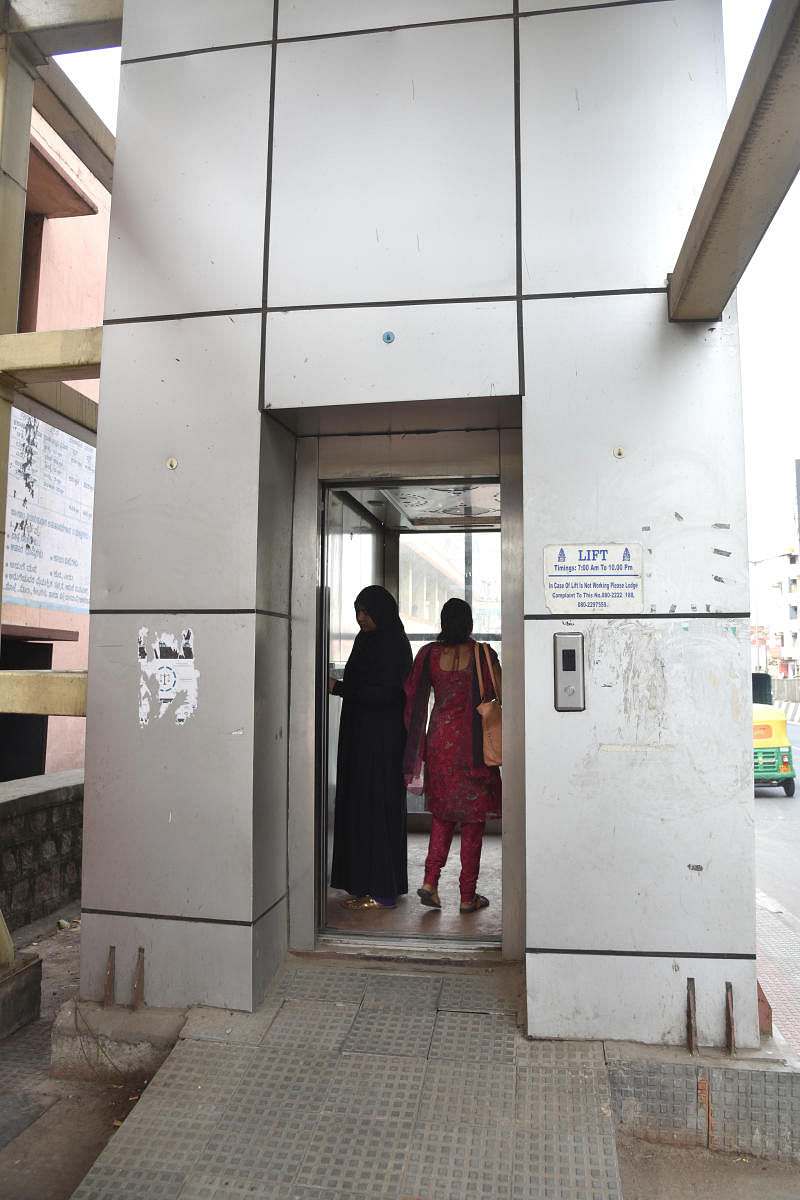
The vertical push of Bengaluru’s skyline is unmistakably fast. But is safety compromised in that zeal to maximize realty space? The rising elevator accidents offer no comfort. Nor does the shocking reality that hundreds of lifts in buildings below the ‘15-metre high-rise’ tag are in dire need of a serious safety check.
Last week, when a lift cable snapped due to apparent disrepair and the entire structure collapsed inside a city apartment, four law students paid a big price. As they lay critically wounded with fractured bones, the writing on the wall was loud and clear: There is just no getting away from the perils of poor maintenance, zero inspection and low build quality.
Inspection bottlenecks
The Department of Electrical Inspectorate is tasked with periodic inspections of elevators in the city. But its officials say the Department’s mandate is to oversee lifts in buildings that are above 15 metres in height. These buildings, they claim, are safe as they conform to the Karnataka Lift Act & Rules and the relevant codes of practices prescribed by Bureau of Indian Standards (BIS).
But rules are clear that any under-15m building that installs a transformer or a generator in its premises, by default has to approach the Department for any type of electrical installations. Officials admit there are stray cases where building owners obtain approval (not licence) to install a lift but not a licence.
Risky cost-cutting
Here’s why, as a department source explains: “The owners install lifts by local vendors who would not be registered with us, to save some money.” This was clearly the case in the recent Frazer Town lift accident that injured the four law students.
To erect a lift, the owner of the building should first get the permission. Once the installation is complete, the Inspectorate informs, the owner should apply for grant of a licence. The application should be attached with all documents related to the lift’s motor or machine, over speed governor, controller, buffers, door drive, lift car, landing door fire rating, main host and governor rope, besides the electrical travelling cable.
Rules galore
The Inspectorate officials will then conduct tests during the inspection to check if the lift installation is in general conformity with these rules: Karnataka Lift Act & Rules, requirements specified in the relevant code of practices prescribed by the BIS, Electricity Act, 2003 (Central Act 36 of 2003) and any rules or regulations under the National Electrical Code, National Building Code or specifications of International Electro-Technical Commission.
Only if the inspectors are fully satisfied will they recommend to the chief electrical inspector that the licence be granted. But there is also another condition, as D L Nagaraju, Additional Chief Electrical Inspector reminds: The lift owner should enter into a contract with a registered vendor for satisfactory maintenance, including cleaning, oiling, adjusting and repairing of the lift.
Standard procedures
Besides maintenance, there are also globally recognised standard operating procedures that are not always followed here. “A key requirement is signboards that warn people never to use a lift in case of fire. The lift could get jammed, trapping people inside. The smoke could kill them, asphyxiate them,” notes Uday Vijayan from Beyond Carlton.
In the Carlton Towers fire accident too, two out of the nine victims were trapped inside the lift, recalls Vijayan. “Most people are not aware that a lift should be a no-go zone in case of fire. As an alternative to lifts, fire exits should always be open. In Carlton Towers, all fire exits were gated and locked.”
Seamless access
For the fire department, seamless access to the lifts is extremely critical. “The moment we get a call, we rush to the spot. Our control rooms are open for calls 24 / 7. It is very important to keep the lifts checked periodically, and ensure that the quality control certifications are up-to-date,” notes Director General of Fire and Emergency Services, M N Reddi.
But as the frequent accidents prove, lift upkeep has not been a top priority in the city. Elevator safety experts have raised concerns at the growing trend to go for local manufacturers who compromise on quality to reduce costs.
Diluting guidelines
The risk factor gets amplified when cost-cutting extends to maintenance, diluting stringent conditions imposed at the time of installation. “Annual maintenance is often given the miss. The lift cables, bearings are prone to wear and tear due to constant movement,” notes Suresh Hari from the Confederation of Real Estate Developers’ Associations of India (Credai) Karnataka chapter.
Many apartments, particularly the smaller ones, have done away with lift operators. For unaccompanied senior citizens and children, this could get tricky. “Even in apartments that do have operators, employing trained personnel is critical. Lift maintenance too should be outsourced only to authorised people,” says Hari.
But a lot of issues with lifts can be addressed right at a building’s planning and design stage. Hari explains, “Quality lift manufacturers take their time in installation. You cannot rush it, since all safety aspects will have to be taken care of. The location of the lift in the building layout, the number of elevators and free accessibility are all important.”